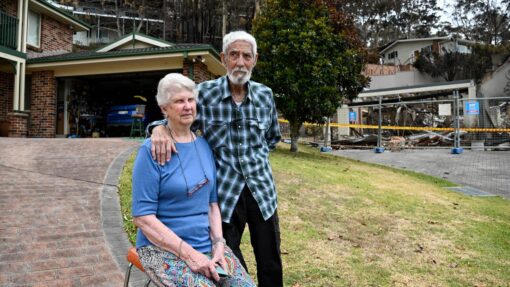Florida in emergency as Storm Idalia thrashes Cuba
Laura Bargfield |
Florida residents have loaded up on sandbags and evacuated from homes in low-lying areas along the Gulf Coast as Tropical Storm Idalia intensified, and forecasters predict it will hit in days as a major hurricane with potentially life-threatening storm surges.
“You should be wrapping up your preparation for #TropicalStormIdalia tonight and Tues morning at the latest,” the National Weather Service in Tampa Bay said Monday on X, formerly known as Twitter.
As the state prepared, Idalia thrashed Cuba with heavy rain, especially in the westernmost part of the island, where the tobacco-producing province of Pinar del Rio is still recovering from the devastation caused by Hurricane Ian almost a year ago.
Authorities in the province issued a state of alert, and residents were evacuated to friends’ and relatives’ homes as authorities monitored the Cuyaguateje river for possible flooding. As much as 10cm of rain fell in Cuba on Sunday, meteorological stations reported.
Idalia is expected to start affecting Florida with hurricane-force winds as soon as late Tuesday and arrive on the coast by Wednesday. It is the first storm to hit Florida this hurricane season and a potentially big blow to the state, which is also dealing with lingering damage from last year’s Hurricane Ian.
Idalia is also the latest in a summer of natural disasters, including wildfires in Hawaii, Canada and Greece; the first tropical storm to hit California in 84 years, and devastating flooding in Vermont.
Florida Governor Ron DeSantis declared a state of emergency in 46 counties, a broad swath that stretches across the northern half of the state from the Gulf Coast to the Atlantic Coast. The state has mobilised 1100 National Guard members, who have 2400 high-water vehicles and 12 aircraft at their disposal for rescue and recovery efforts.
DeSantis warned of a “major impact” to the state, noting the potential for Idalia to become a Category 3 hurricane.
“The property — we can rebuild someone’s home,” DeSantis said during a news conference Monday.
“You can’t unring the bell, though, if somebody stays in harm’s way and does battle with Mother Nature.”
Large parts of the western coast of Florida are at risk for storm surges and floods. Evacuation notices have been issued in 21 counties with mandatory orders for some people in eight of those counties.
As Gulf Coast residents packed up their cars or hauled out generators in case of power outages, state officials warned about potential fuel contamination at dozens of petrol stations.
President Joe Biden spoke to DeSantis on Monday morning, saying he had approved an emergency declaration for the state, the White House said in a news release. DeSantis is running for the Republican presidential nomination in 2024.
Southwest Florida is still recovering from Hurricane Ian, which was responsible last year for almost 150 deaths. The Category 5 hurricane damaged 52,000 structures, nearly 20,000 of which were destroyed or severely damaged.
At 11pm on Monday, Idalia was about 16km off the western tip of Cuba, with maximum sustained winds of 110km/h, the hurricane centre said. Idalia was moving north at 13km/h. On Tuesday, it was expected to turn northeast at a faster pace, reaching Florida’s western coast as a dangerous major hurricane on Wednesday.
After moving across Florida, Idalia is forecast to blow through Georgia, South Carolina and North Carolina.
So far this year, the East Coast has been spared from cyclones. But in the West earlier this month, Tropical Storm Hilary caused widespread flooding, mudslides and road closures in Mexico, California, Nevada and points north.
The National Oceanic and Atmospheric Administration recently said the 2023 hurricane season would be far busier than initially forecast, partly because of extremely warm ocean temperatures. The season runs through to November 30, with August and September typically the peak.
AP


